Painted Deerskin Fragmentary Item Number: E386525-0 from the National Museum of Natural History
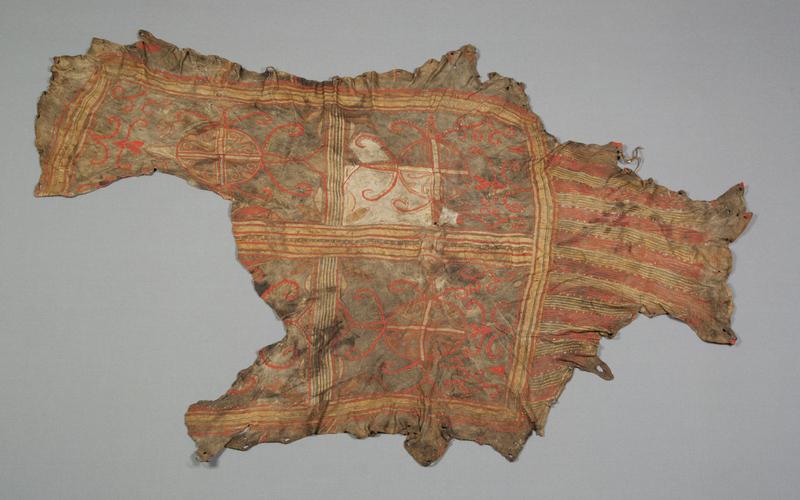
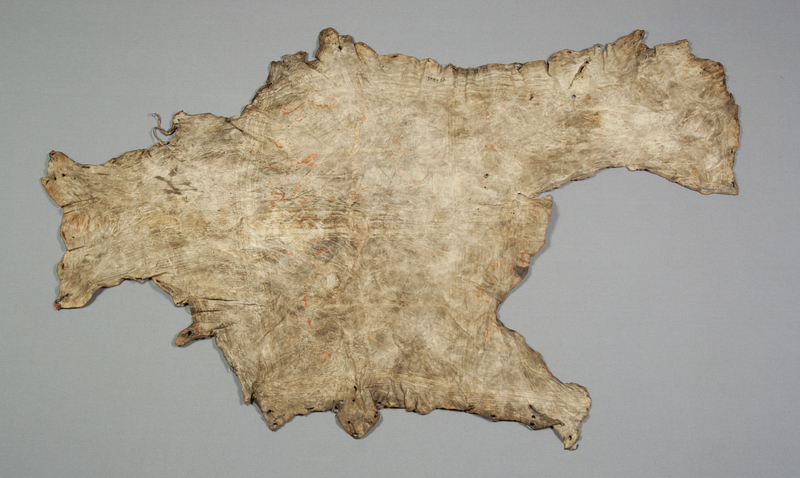

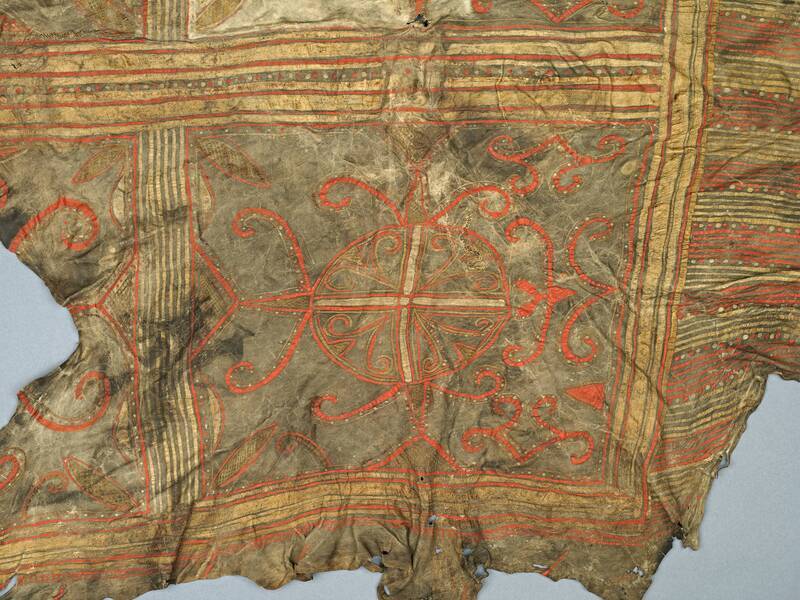
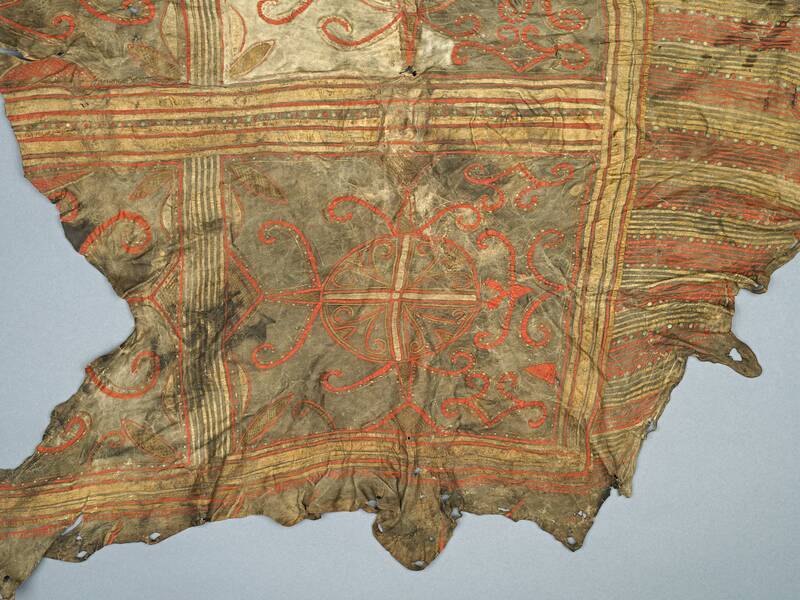
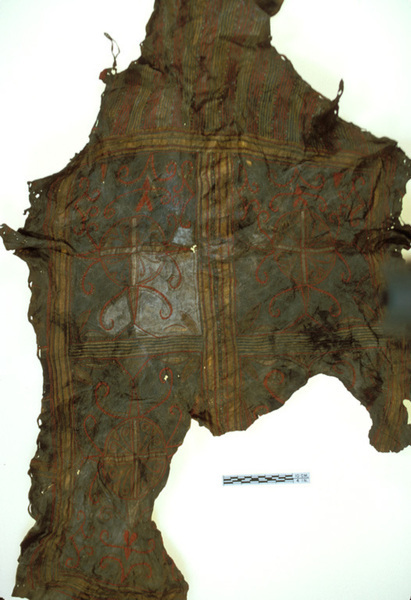
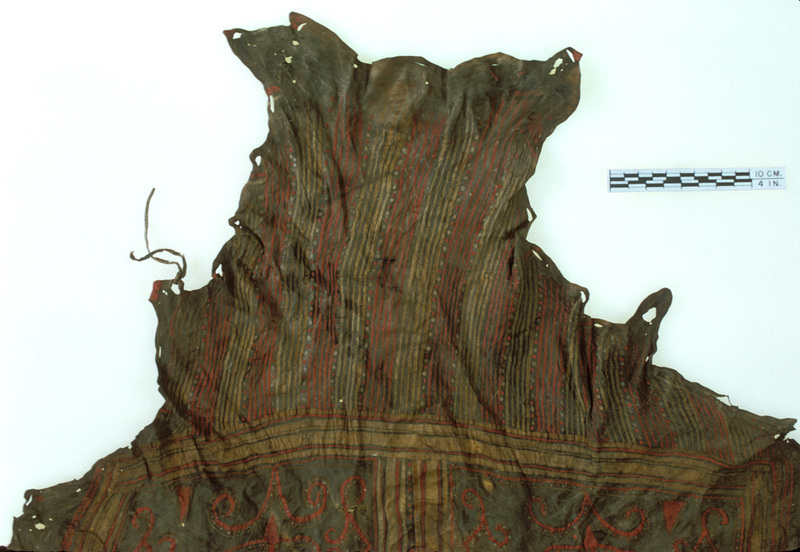

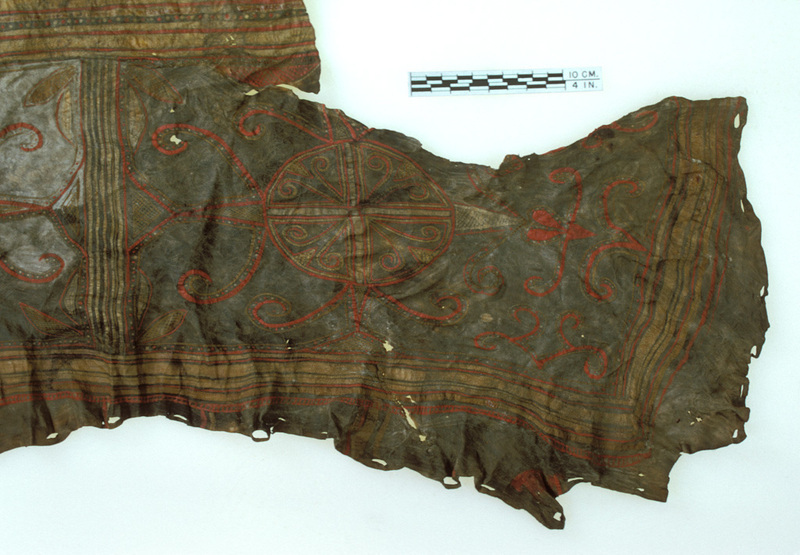
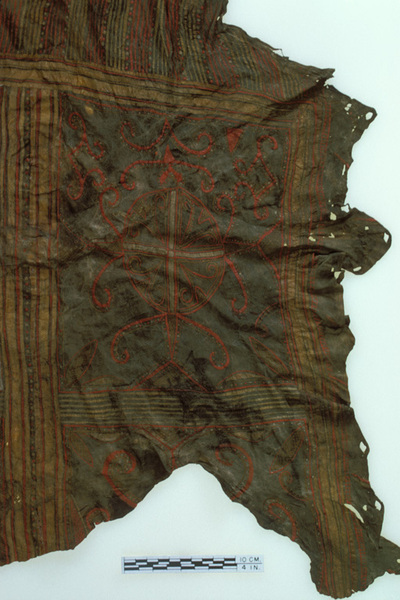
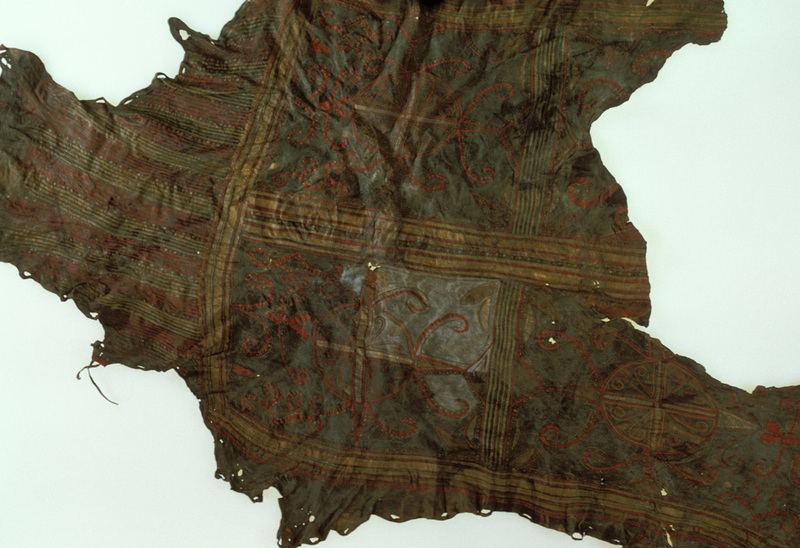
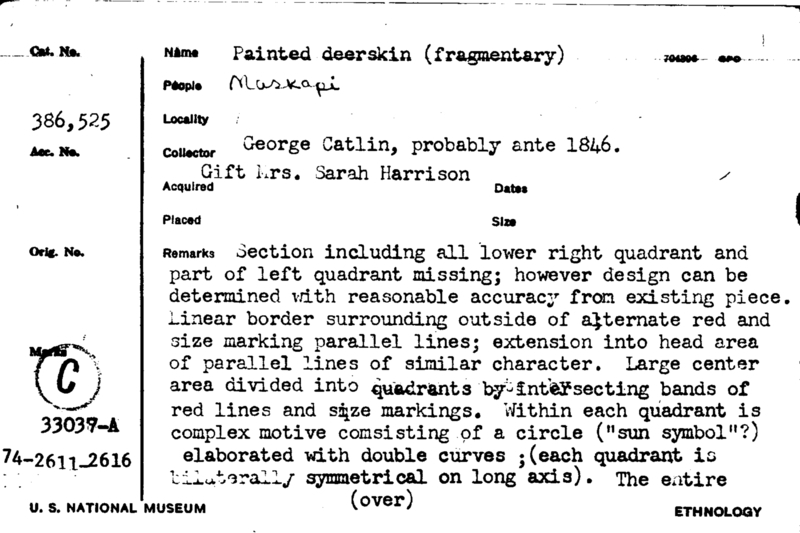
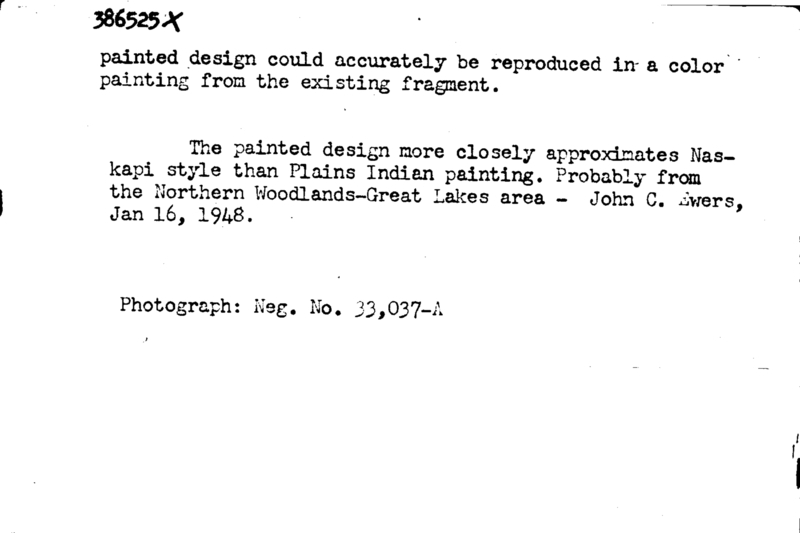
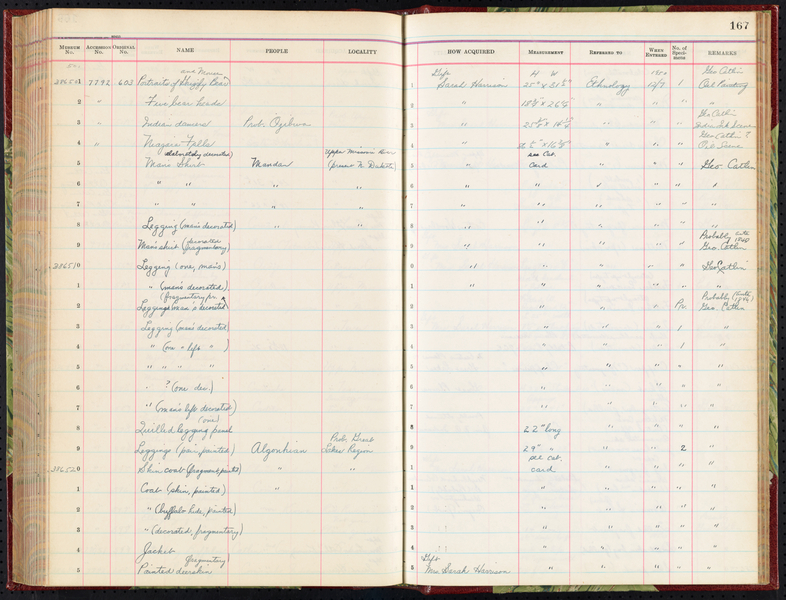
Notes
FROM CARD: "SECTION INCLUDING ALL LOWER RIGHT QUADRANT AND PART OF LEFT QUADRANT MISSING; HOWEVER DESIGN CAN BE DETERMINED WITH REASONABLE ACCURACY FROM EXISTING PIECE. LINEAR BORDER SURROUNDING OUTSIDE OF ALTERNATE RED AND SIZE MARKING PARALLEL LINES; EXTENSION INTO HEAD AREA OF PARALLEL LINES OF SIMILAR CHARACTER. LARGE CENTER AREA DIVIDED INTO QUADRANTS BY INTERSECTING BANDS OF RED LINES AND SIZE MARKINGS. WITHIN EACH QUADRANT IS COMPLEX MOTIVE CONSISTING OF A CIRCLE ('SUN SYMBOL'?) ELABORATED WITH DOUBLE CURVES; (EACH QUADRANT IS BILATERALLY SYMMETRICAL ON LONG AXIS). THE ENTIRE PAINTED DESIGN COULD ACCURATELY BE REPRODUCED IN A COLOR PAINTING FROM THE EXISTING FRAGMENT. THE PAINTED DESIGN MORE CLOSELY APPROXIMATES NASKAPI STYLE THAN PLAINS INDIAN PAINTING. PROBABLY FROM THE NORTHERN WOODLANDS - GREAT LAKES AREA - JOHN C. EWERS, JAN. 16, 1948." Artifact is illus. Fig. 2, p. 61 in "Ceremonial Robes of the Montagnais-Naskapi" by Alika Podolinsky Webber, American Indian Art Magazine, Vol. 9, No. 1, Winter 1983, and identified there as "Ceremonial robe fragment. Naskapi [Innu] ... Native tanned unsmoked caribou skin. 100.5 cm long, 63 cm wide. The large center area is divided into quadrants by intersecting bands of red lines and size markings. Within each quadrant is a complex motif consisting of a circle elaborated with double curves; and the circle itself is divided into four equal sections forming a cross." Possible meanings of the design are also discussed on pp. 67-68 in the same article.
Item History
- Made in USA and Canada
- Collected by George Catlin in USA and Canada
- Received from Thomas Donaldson on October 21, 1881
What
- Name
- Painted Deerskin Fragmentary
- Identification Number
- E386525-0
- Type of Item
- hide painting
Who
- Culture
- Innu and Naskapi ?
- Field Collector
- George Catlin
- Received from
- Thomas Donaldson
Where
- Holding Institution
- National Museum of Natural History
- Made in
- USA and Canada
- Collected in
- USA and Canada
When
- Acquisition Date
- on October 21, 1881
Other
- Accession Number
- 010638